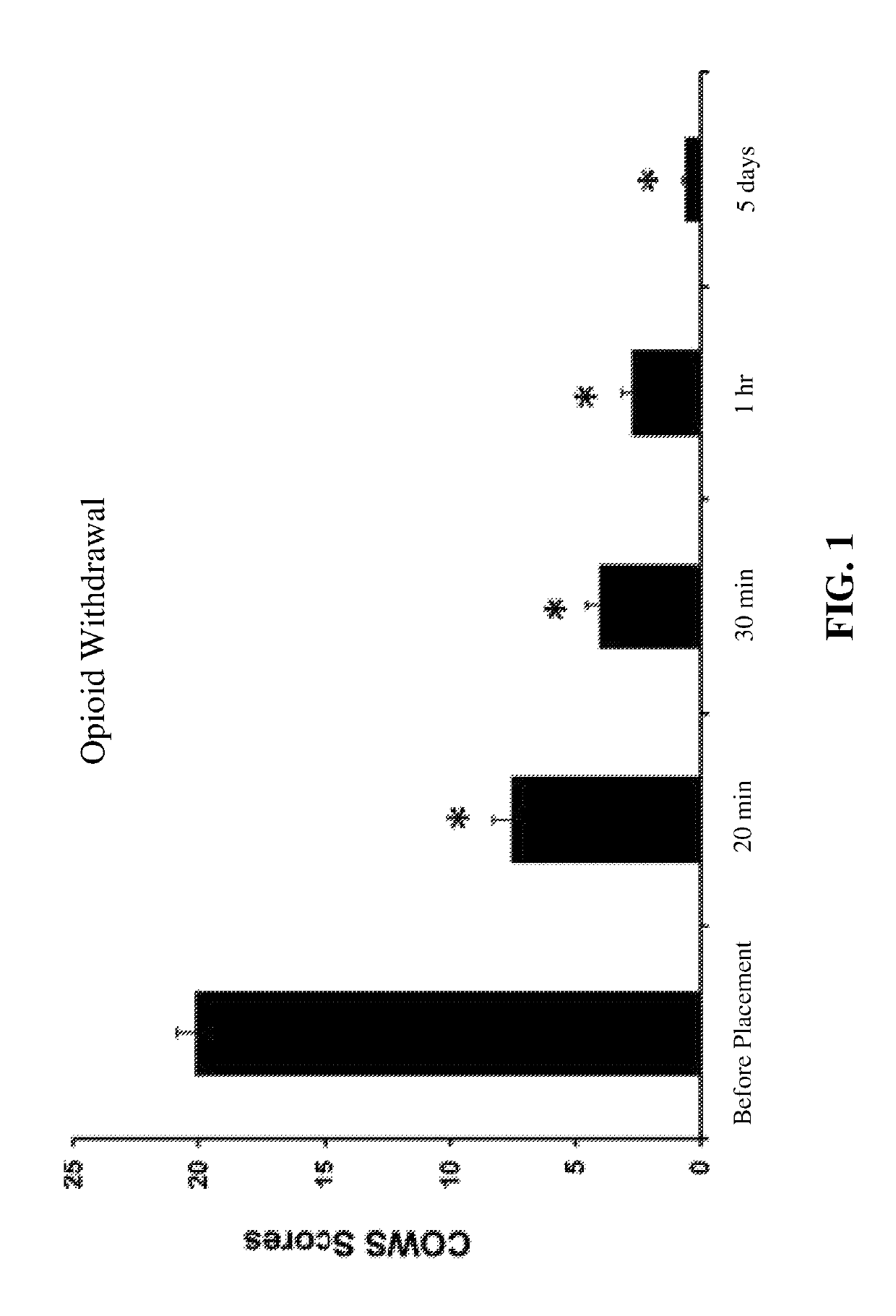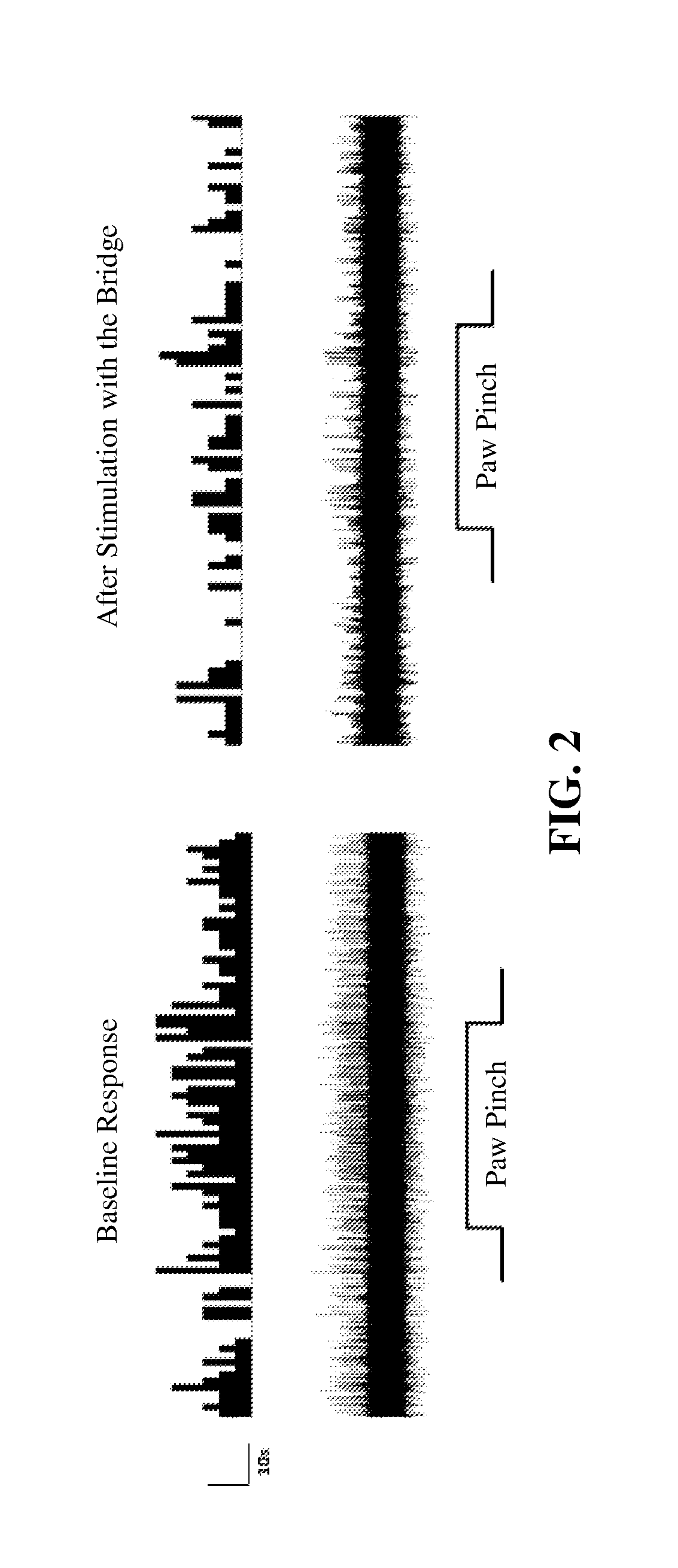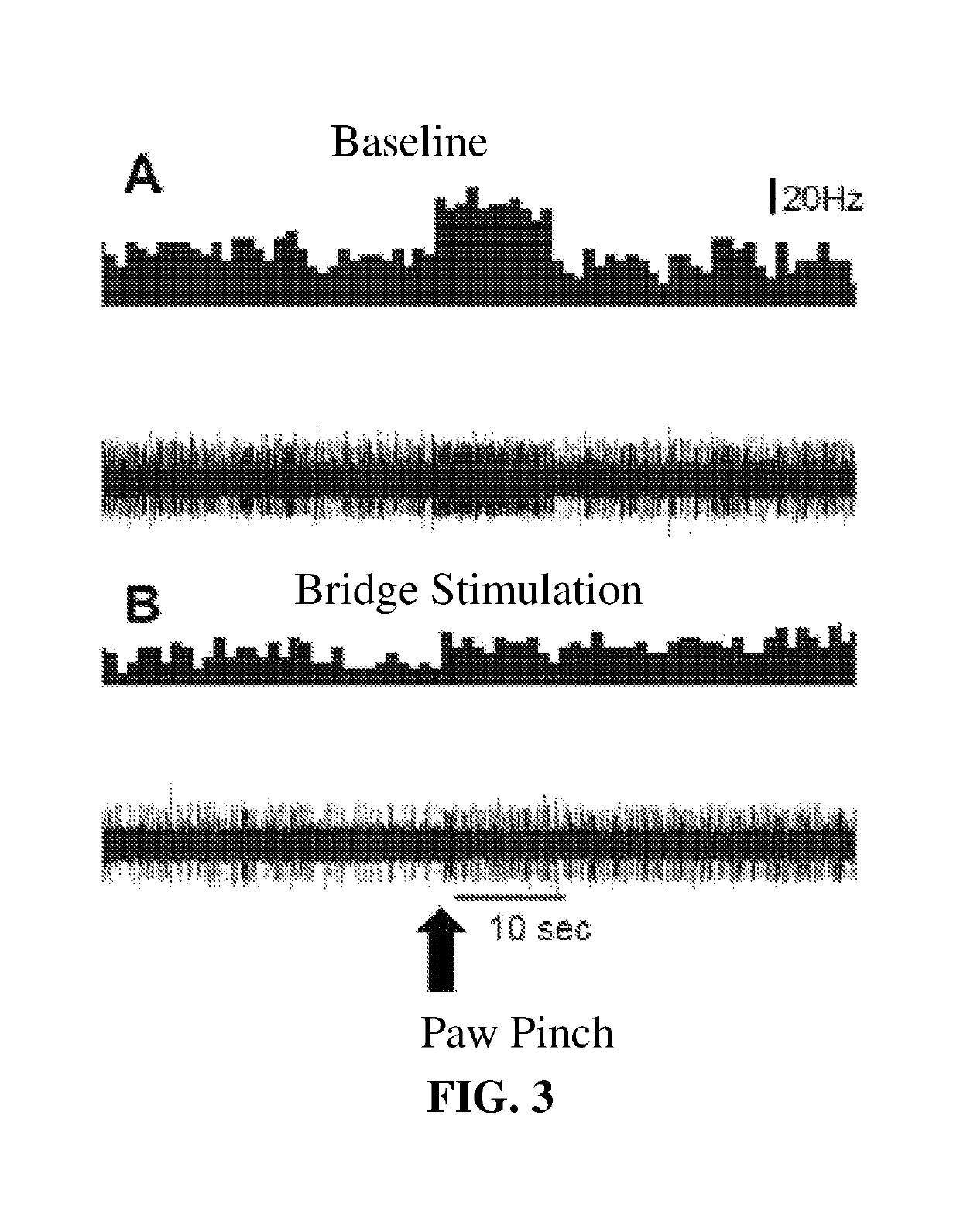Methods of treating disease using auricular peripheral nerve field stimulation
a technology of peripheral nerves and nerves, applied in the field of nerve stimulation devices and methods, can solve the problems of opioid addiction, inability to treat most individuals with opioid use disorders, and negative impact on many communities around the world
- Summary
- Abstract
- Description
- Claims
- Application Information
AI Technical Summary
Benefits of technology
Problems solved by technology
Method used
Image
Examples
example 1
[0117]This study aimed to determine the effects of the Bridge, Innovative Health Solutions, INC, Versailles, Ind., on withdrawal scores during the induction phase of opioid withdrawal therapy and the percentage of subjects who successfully transitioned to medication assisted therapy (MAT).
[0118]Adult patients (≥18 years old) who met DSM-IV criteria for opioid dependence and voluntarily presented to outpatient drug treatment clinics between June 2015 and July 2016 were included in this retrospective study. Inclusion criteria included a minimum age of 18 years old and a history of dependence on heroin or other opioids such as prescription narcotics, methadone, and buprenorphine / naloxone. A total of 73 subjects were included. In this cohort, the mean age was 32.9 years old and 65% were male. The mean length of drug use was 70 months and 90.5% of the subjects had been using opioids for at least 2 years. 68% of patients had used heroin, 23% had used prescription narcotics, 33% had used b...
example 2
[0127]In this Example, all patients involved treated were in the acute phase of heroin or opiate withdrawal as verified by the Clinical Opiate Withdrawal Scale (COWS), a self-report assessment tool for measurement of opiate withdrawal symptoms.
[0128]Data was collected on 8 cases. Six had addiction to prescription opiate pain medications and two had heroin addiction. Four were men and four were women and all were Caucasian, with a mean age of 33.2 years (SD=7.1). All patients were in moderate to moderately-severe withdrawal based on COWS scale. The Bridge device was implanted and patients were observed in the clinic for at least one hour before being sent home. Medications were not given in the clinic in order to observe acute Bridge device effects. However patients were given the traditional non-narcotic rescue medications to take at home per request.
[0129]Pre-post COWS data were available for 7 / 8 patients (one missing post-test). The pre-test mean COWS of 21.9 (SD=5.5) was signific...
example 3
[0131]This Example investigated the intracranial hemodynamic effect of peri-auricular PENFS. For this study the Electro Accupuncture Device (EAD), Innovative Health Solutions, INC, Versailles, Ind., was used. The treatment protocol produced significant changes in cerebral hemodynamics as a result of direct cranial nerve stimulation as detected by Transcranial Doppler ultrasonography.
[0132]The EAD was powered by 3 1V batteries. After activation the device produced a neuro-modulating signal ranging from 1-10 kQ in intervals of 100 ms, a bipolar impulse width of 1 ms with a duty cycle of 2 hr duty / 2 hr rest for a total of 120 hours.
[0133]A single 10-minute percutaneous neuromodulating stimulation was performed on a cohort of 12 healthy adult patients during a 3-week span. The cohort, ages 19-64, were randomly recruited. The subjects were interviewed individually. Past medical and surgical histories were collected and screened for potentially disqualifying morbidities. All subject's que...
PUM
| Property | Measurement | Unit |
|---|---|---|
| voltage | aaaaa | aaaaa |
| repetition frequency | aaaaa | aaaaa |
| repetition frequency | aaaaa | aaaaa |
Abstract
Description
Claims
Application Information
 Login to View More
Login to View More - R&D
- Intellectual Property
- Life Sciences
- Materials
- Tech Scout
- Unparalleled Data Quality
- Higher Quality Content
- 60% Fewer Hallucinations
Browse by: Latest US Patents, China's latest patents, Technical Efficacy Thesaurus, Application Domain, Technology Topic, Popular Technical Reports.
© 2025 PatSnap. All rights reserved.Legal|Privacy policy|Modern Slavery Act Transparency Statement|Sitemap|About US| Contact US: help@patsnap.com



